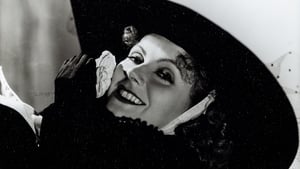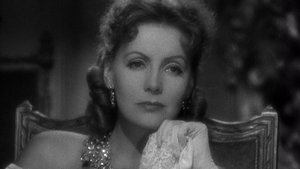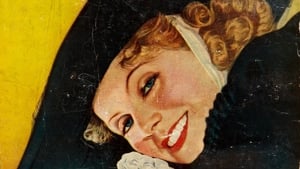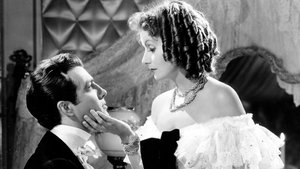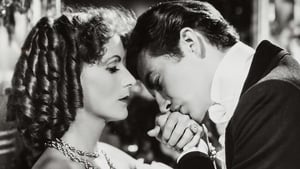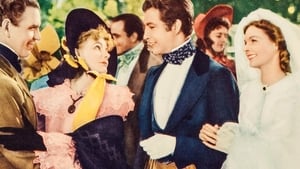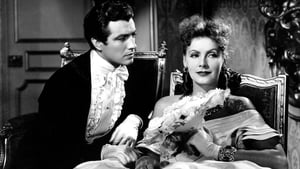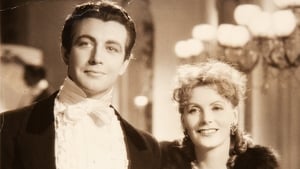Contact: info@alwanfilm.com
Video Sources 0 Views

Synopsis
Camille 1936 Colorized Review: A Romantic Classic Reimagined in Color

Introduction
When we think of timeless romantic dramas, Camille (1936) stands out as one of the most enduring and heart-wrenching films of its era. Directed by George Cukor and featuring powerhouse performances by Greta Garbo and Robert Taylor, Camille is an adaptation of Alexandre Dumas fils’ novel La Dame aux Camélias, which tells the tragic story of a doomed love affair set against the backdrop of 19th-century Paris. Originally released in black and white, this film has since been reimagined in a colorized version, breathing new life into its visually rich world. In this review, we will explore how the 1936 adaptation of Camille captures the essence of classic Hollywood, delve into the impact of its early colorized version, and examine the broader cultural significance of this iconic film.
Check The Full Colorized Movies List
Check Our Colorized Movies Trailer Channel
Understanding Camille 1936 Colorized: Director, Cast, and Genre
Director’s Vision
George Cukor, renowned for his expertise in directing romantic dramas, helmed Camille (1936) with a keen eye for emotional depth and visual storytelling. Cukor’s direction is marked by his ability to draw out the most nuanced performances from his actors, creating a film that is rich in both character and atmosphere. His vision for Camille was to capture the opulence of Parisian society while delving deeply into the personal tragedies of its characters. Known as a “women’s director,” Cukor’s sensitivity to the inner lives of his female characters is evident in Camille, where he balances the lush romanticism of the narrative with a stark portrayal of its heroine’s struggles.
The Iconic Performance of Actors
At the heart of Camille (1936) is Greta Garbo’s mesmerizing portrayal of Marguerite Gautier, the beautiful and ill-fated courtesan. Garbo’s performance is considered one of her finest, blending vulnerability, strength, and an ethereal grace that makes Marguerite’s tragic journey both believable and deeply moving. Garbo’s portrayal of Marguerite captures the complexity of a woman torn between love and societal expectations, making her one of the most unforgettable characters in classic cinema.
Opposite Garbo is Robert Taylor as Armand Duval, Marguerite’s passionate yet naive lover. Taylor’s performance complements Garbo’s, creating a palpable chemistry that drives the film’s emotional core. The supporting cast, including Lionel Barrymore as Armand’s disapproving father, adds further depth to the story, illustrating the broader social pressures that doom the central romance.
Exploring the Genre
Camille (1936) is a quintessential romantic drama, steeped in the conventions of Hollywood’s Golden Age. The film’s lavish costumes, ornate sets, and melodramatic score all contribute to its status as a classic of the genre. Cukor’s adaptation of Dumas’ novel emphasizes the emotional highs and lows of the characters, crafting a narrative that is at once deeply personal and grandly operatic. The film’s genre conventions, from its star-crossed lovers to its tragic ending, solidify Camille as a touchstone of romantic cinema.
Exploring the World of Camille 1936 Colorized: Plot and Characters
Detailed Synopsis
Set in the glittering world of 19th-century Paris, Camille (1936) tells the story of Marguerite Gautier, a glamorous courtesan known for her beauty and charm. Marguerite lives a life of luxury, sustained by wealthy patrons, but her extravagant lifestyle is overshadowed by her failing health and the emotional toll of her choices.
The plot begins when Marguerite meets Armand Duval, a young, idealistic man who falls deeply in love with her. Despite initial reluctance, Marguerite reciprocates Armand’s affection, and the two embark on a passionate affair. However, their happiness is short-lived as societal pressures and Marguerite’s worsening illness begin to tear them apart.
Key moments in the film include Armand’s father convincing Marguerite to end the relationship to preserve his son’s reputation, and Marguerite’s subsequent heartbreak as she sacrifices her own happiness for Armand’s future. The film’s climax, set against the backdrop of Marguerite’s final days, is a poignant exploration of love, loss, and redemption.
The supporting characters, such as Marguerite’s friends and rivals, add layers of complexity to the story, highlighting the conflicting forces of desire, duty, and despair that shape Marguerite’s fate.
The Art of Film Colorization
Understanding the Process
Film colorization involves adding color to black-and-white films using a combination of digital techniques and artistic interpretation. The process requires painstaking attention to detail, as each frame must be colored accurately to maintain the film’s visual integrity. The colorization of Camille (1936) was a major undertaking, as the film’s intricate costumes, lavish sets, and atmospheric lighting demanded careful handling to preserve the original artistic intent.
The goal of colorization is often to update classic films for modern audiences, making them more visually appealing without compromising their historical authenticity. In the case of Camille, the colorized version allows viewers to experience the lush world of 19th-century Paris in a new way, highlighting the opulence and emotional depth of Cukor’s direction.
Development Over Time
The technology behind film colorization has evolved significantly since the mid-20th century. Early attempts were met with mixed reviews, as the colors were often oversaturated or poorly matched to the original tones. However, advances in digital technology have made colorization more accurate and artistically pleasing, allowing for a more seamless blend of color and black-and-white aesthetics.
Early Colored Films: A Brief History
Emergence of Early Colored Techniques
The quest for color in cinema began with experimental techniques in the early 1900s. Processes like hand-painting frames and using tinted filters allowed filmmakers to introduce color, albeit in limited and sometimes crude forms. The introduction of Technicolor in the 1930s was a major breakthrough, offering vibrant and realistic colors that revolutionized the film industry.
By the time Camille was released in 1936, Technicolor was already gaining popularity, but many films, including Camille, were still produced in black and white due to budget constraints and artistic choices. The subsequent decision to colorize Camille reflects an ongoing desire to revisit classic films with the added dimension of color.
Camille 1936 and Its Early Colored Version
The Decision to Release in Color
The colorization of Camille (1936) was driven by a desire to reintroduce the film to a new generation of viewers. Adding color to the film’s rich visual tapestry was intended to enhance the viewing experience, bringing out the beauty of the sets, costumes, and the actors’ expressions in a way that black and white could not fully capture.
Impact on the Visual Narrative
Colorizing Camille alters the visual narrative in subtle but significant ways. The vibrant hues breathe new life into Marguerite’s lush surroundings, highlighting the contrast between her glamorous public persona and her private suffering. The colorization also enhances the emotional impact of key scenes, such as the grand balls and intimate moments between Marguerite and Armand, making the film feel more immediate and accessible to contemporary audiences.
The Debate Over Film Colorization
Controversy Surrounding Colorization
Colorization remains a controversial practice within the film community. Critics argue that it can undermine the director’s original vision and that black-and-white films possess a unique aesthetic that is often lost in the transition to color. In the case of Camille, some purists believe that the stark contrasts and subtle shading of the original black-and-white version contribute to the film’s melancholy atmosphere and should be preserved.
However, supporters of colorization contend that adding color can revitalize classic films, making them more engaging for modern viewers who might be put off by black and white. They argue that, as long as the colorization process respects the original tone and intent of the film, it can be a valuable tool for keeping classic cinema relevant.
Examining Camille 1936 as an Early Colored Film
Enhancement or Distraction?
The colorization of Camille (1936) is a double-edged sword. On one hand, the colors highlight the film’s romantic and dramatic elements, making the lush costumes and opulent settings pop in ways that black and white cannot. On the other hand, the added colors can sometimes feel at odds with the film’s original mood, potentially distracting from the story’s tragic core.
For some viewers, the colorized version enhances the emotional resonance of the film, allowing them to connect more deeply with the characters and their world. For others, the vibrant hues may feel like an unwelcome intrusion, detracting from the film’s timeless, ethereal quality.
Influence and Legacy: Camille 1936 Colorized’s Impact on Cinema
Defining Romantic Tragedy
Camille (1936) has long been hailed as one of the definitive romantic tragedies of classic cinema. Its portrayal of doomed love, set against a backdrop of societal constraints and personal sacrifice, has influenced countless films in the genre. The film’s emphasis on character-driven storytelling and emotional depth helped set a standard for romantic dramas that would follow.
Cukor’s direction and Garbo’s performance, in particular, have been praised for their ability to convey complex emotions with subtlety and grace. The film’s legacy endures not only because of its narrative power but also because of its influence on subsequent filmmakers who sought to capture the same blend of romance and tragedy.
Director’s Cinematic Legacy: Beyond Camille 1936 Colorized
George Cukor’s Influence
George Cukor’s impact on cinema extends far beyond Camille (1936). Known for his collaborations with some of Hollywood’s greatest actresses, including Katharine Hepburn and Judy Garland, Cukor’s films often explored the intricacies of human relationships with a focus on strong female characters. His work in romantic dramas, comedies, and literary adaptations has left a lasting imprint on Hollywood, shaping the way stories about love, identity, and personal struggle are told.
Themes Explored in Camille 1936 Colorized
Darkness, Morality, and Redemption
Camille (1936) delves into themes of darkness, morality, and redemption, exploring the complexities of love in a world defined by rigid social norms. Marguerite’s journey is one of self-discovery, as she grapples with her desire for happiness and the sacrifices she must make for those she loves. The film also touches on themes of mortality and the fleeting nature of beauty and love, making it a poignant exploration of human frailty.
Reception and Controversy Surrounding Camille 1936 Colorized
Critical Reception and Audience Reactions
Camille (1936) was met with widespread acclaim upon its release, with critics praising Garbo’s performance as one of the greatest of her career. The film’s emotional intensity and lush production values resonated with audiences, solidifying its place as a classic. However, the colorized version has sparked debate, with some viewing it as a valuable update and others as an unnecessary alteration.
Where to Watch Camille 1936 Colorized Online
Camille (1936) is available for streaming on various platforms, including Amazon Prime Video and the Criterion Channel. Both the original black-and-white version and the colorized edition can be found on DVD and Blu-ray, offering viewers a choice in how they wish to experience this classic film.
FAQs About Camille 1936 Colorized
Q: What makes Greta Garbo’s performance in Camille (1936) so iconic?
A: Garbo’s portrayal of Marguerite Gautier is celebrated for its emotional depth and nuanced delivery. Her ability to convey vulnerability, strength, and heartbreak makes her performance unforgettable.
Q: How does the colorized version of Camille (1936) differ from the original?
A: The colorized version adds a new visual dimension, highlighting the film’s lavish settings and costumes, but also sparks debate about whether it alters the original mood.
Q: Why is Camille (1936) considered a classic of romantic cinema?
A: The film’s powerful storytelling, memorable performances, and exploration of universal themes like love, sacrifice, and redemption contribute to its enduring legacy.
Conclusion
Camille (1936) remains a landmark in the history of romantic cinema, a film that continues to captivate audiences with its timeless tale of love and loss. Whether viewed in its original black-and-white format or the colorized edition, Camille offers a rich emotional experience that speaks to the human condition. The ongoing debate about film colorization only adds to the film’s mystique, highlighting the delicate balance between preserving artistic intent and embracing modern technology. Ultimately, Camille (1936) endures as a testament to the power of storytelling and the enduring allure of classic Hollywood.
